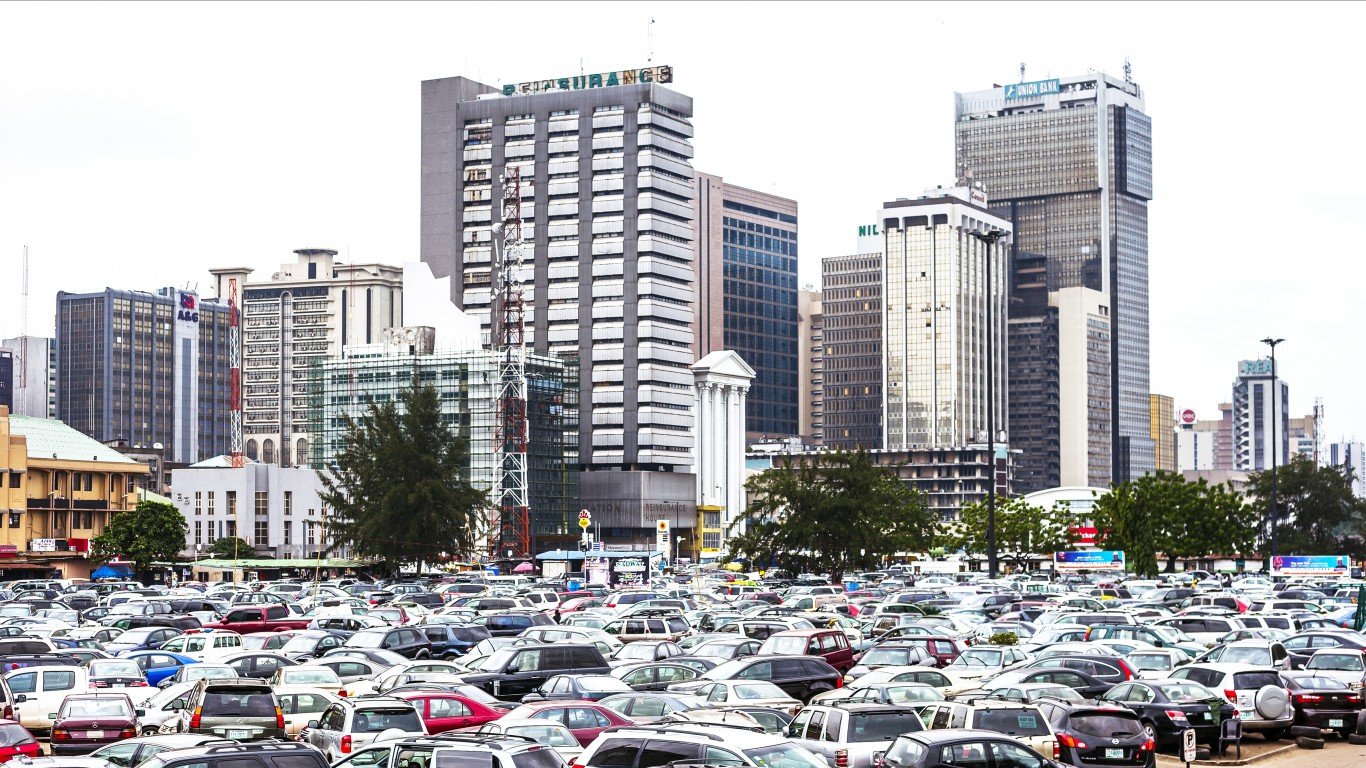
5. Lagos, Nigeria
> Est. population, 2050: 28.2 million, 82% growth from 2022
> Ecological threat level: 5 – Extremely High
> Air quality: 5 – Hazardous
> Expected climate changes: Hotter, Wetter
> Global peace index (1-5, most to least): 3.44 – Very Low Peace
> Estimated GDP in 2020: $76 billion
Africa’s most populated city produces about 10,000 tons of waste daily, of which only about 40% is collected and disposed of in a regulated manner. Air quality consistently exceeds international recommended limits, largely from the city’s massive number of unregulated vehicles and lack of efforts to control emissions effectively.
Unfettered industrial waste is a main cause of water pollution. Poor enforcement of dredging activities is damaging coastal ecosystems and damaging fisheries, an important source of localized economic activity and food.
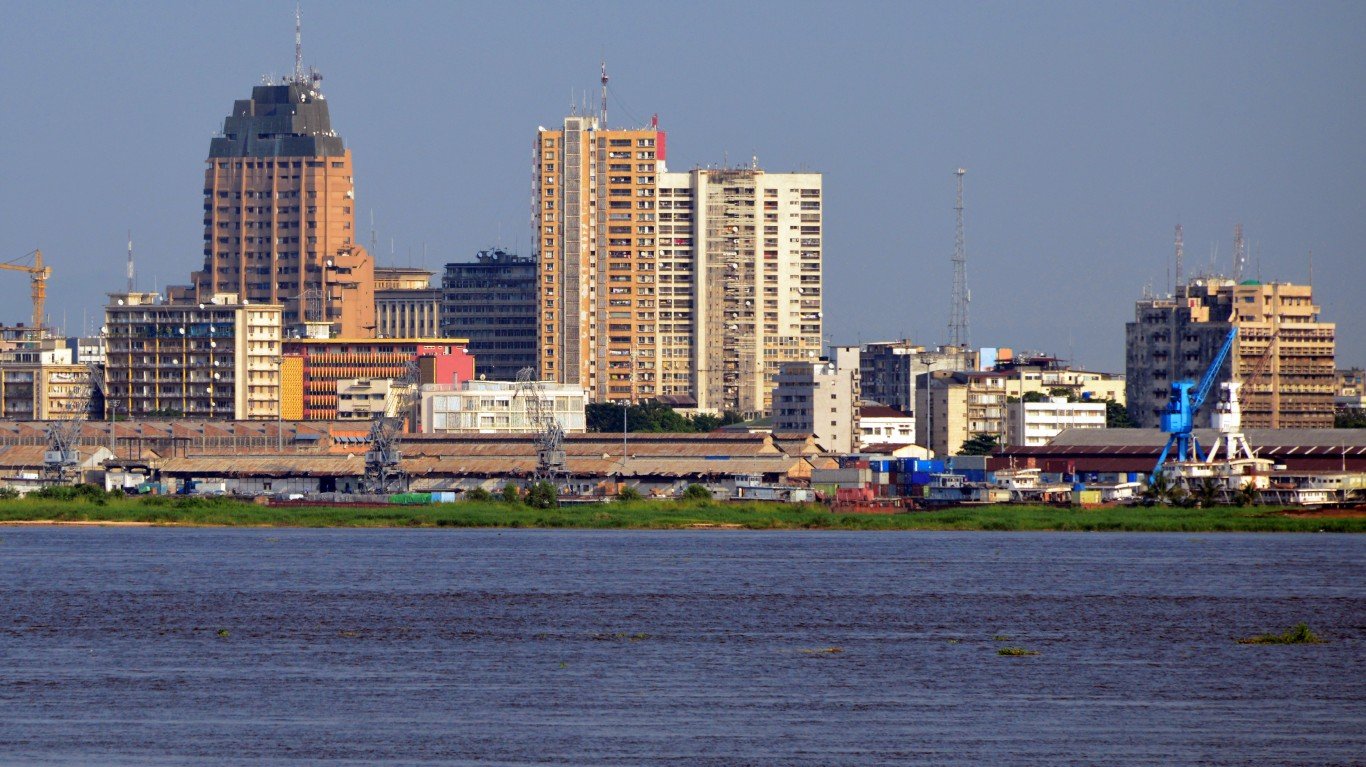
4. Kinshasa, Democratic Republic of the Congo
> Est. population, 2050: 29.0 million, 84% growth from 2022
> Ecological threat level: 5 – Extremely High
> Air quality: 2 – Unhealthy for Sensitive Groups
> Expected climate changes: Drier
> Global peace index (1-5, most to least): 3.95 – Very Low Peace
> Estimated GDP in 2020: $25 billion
Kinshasa is one of six large African cities on this list. The capital of the DRC and one of the continent’s most-populated cities lacks professional and regulated waste management for its nearly 15 million residents. The waste management problem has gotten worse since 2015, when the European Union ended an aid program to support better waste disposal.
Kinshasa, which transitioned from a fishing town into a huge metropolis of geostrategic importance due to the province’s mineral wealth, is projected to face increasing pressures from high population growth, specifically in water and food security. The country is likely to experience higher temperatures, more extreme weather events, and changes in total precipitation. The city’s massive traffic jams and vulnerability to both floods and droughts are other major ecological threats.
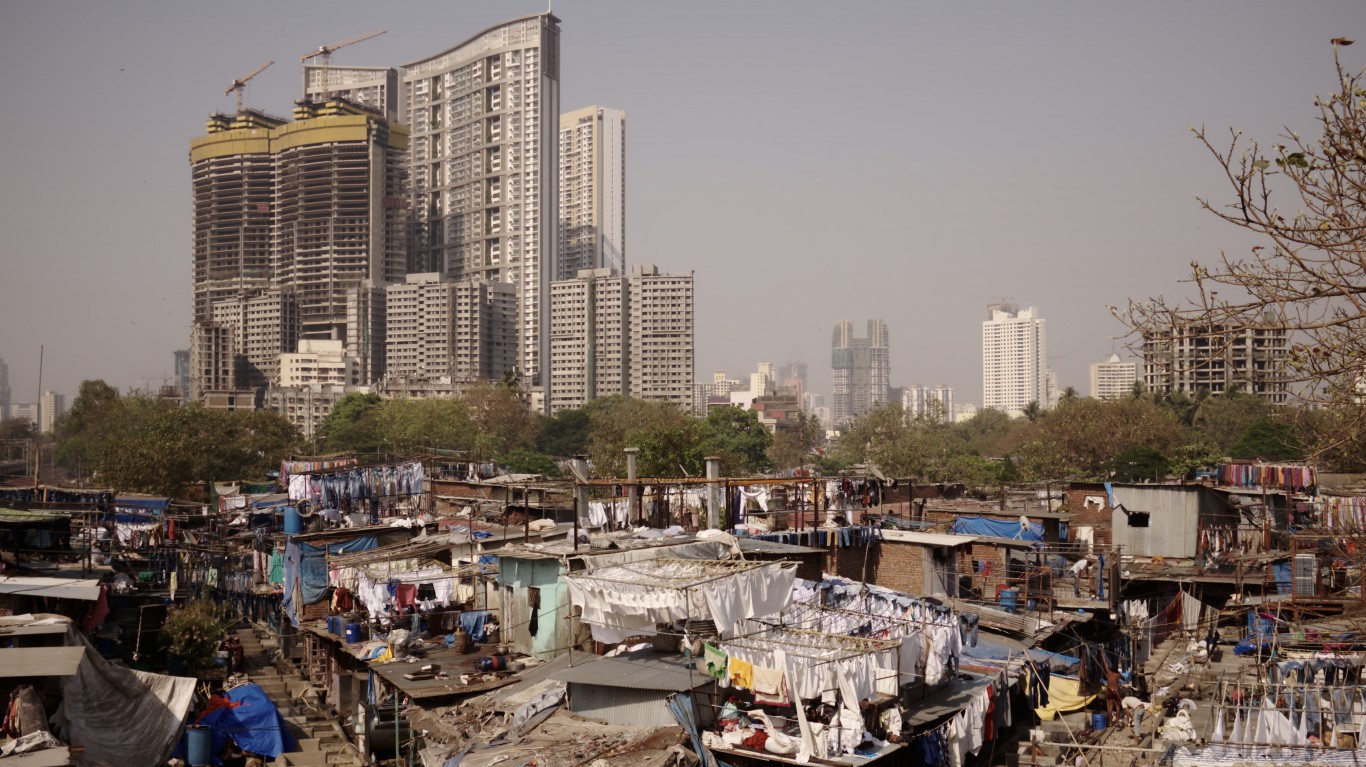
3. Mumbai, India
> Est. population, 2050: 32.4 million, 54% growth from 2022
> Ecological threat level: 4 – High
> Air quality: 3 – Unhealthy
> Expected climate changes: Hotter, Wetter
> Global peace index (1-5, most to least): 2.78 – Very Low Peace
> Estimated GDP in 2020: $300 billion
India’s second most populated city faces many of the same ecological threats as India’s other most-populated cities, Delhi and Kolkata, namely poor air quality from traffic, wood and waste fires, and construction activity.
Mumbai’s Powai reservoir, an artificial lake dating back to the British Raj, is so polluted it no longer serves its intended purpose of supplying drinking water. Coastal mangroves, which serve as a natural barrier to monsoon storm surges and help prevent soil erosion, are disappearing at an alarming rate.
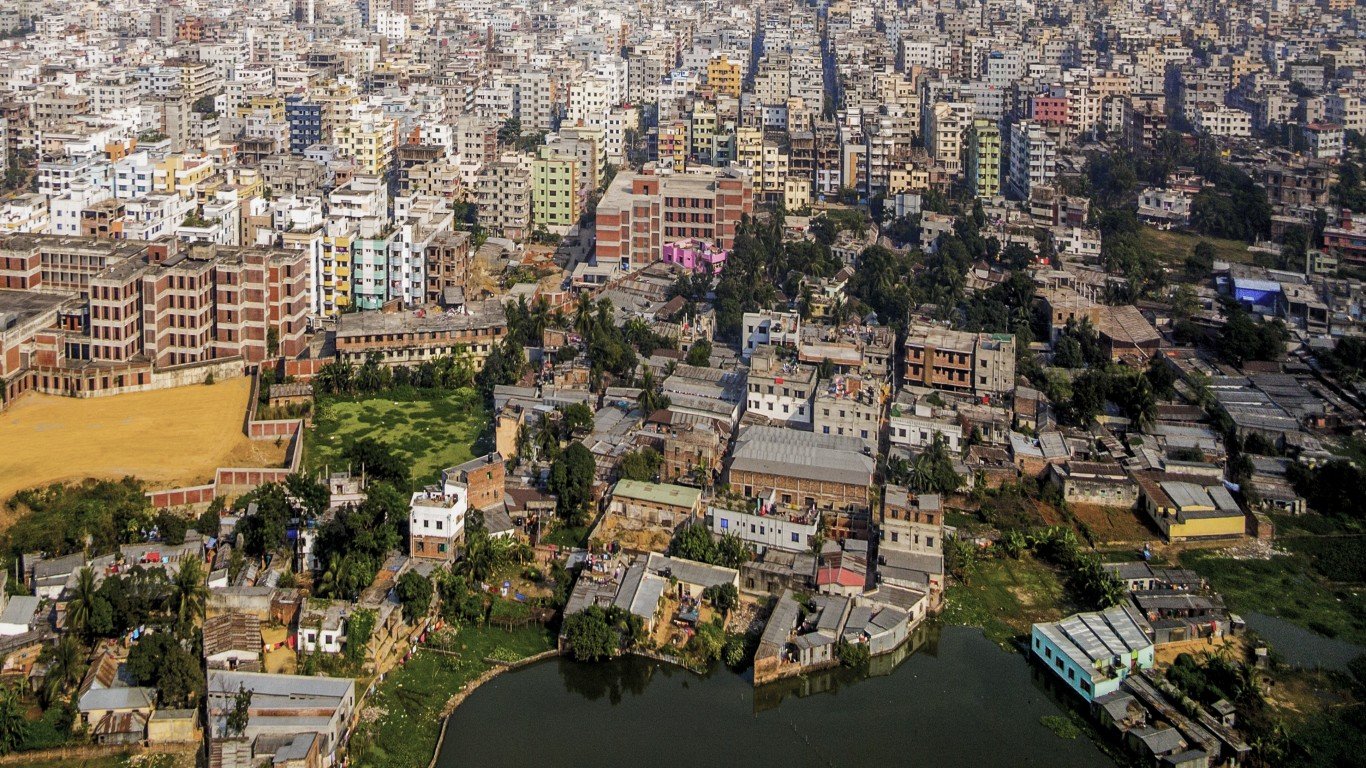
2. Dhaka, Bangladesh
> Est. population, 2050: 34.6 million, 53% growth from 2022
> Ecological threat level: 4 – High
> Air quality: 3 – Unhealthy
> Expected climate changes: Wetter
> Global peace index (1-5, most to least): 2.46 – Low Peace
> Estimated GDP in 2020: $126 billion
The capital of Bangladesh is so densely populated, underdeveloped, and close to sea level, that the ramifications of global warming will be felt by more people there than in most other large cities on the planet. A third of the city’s population cannot rely on piped water, and many residents end up in informal settlements and in the Korail slum.
Heavy vehicular traffic and uncontrolled emissions makes the city’s air quality consistently among the world’s worst. Toxins from unregulated landfills and waste disposal leak into neighboring communities and farms.
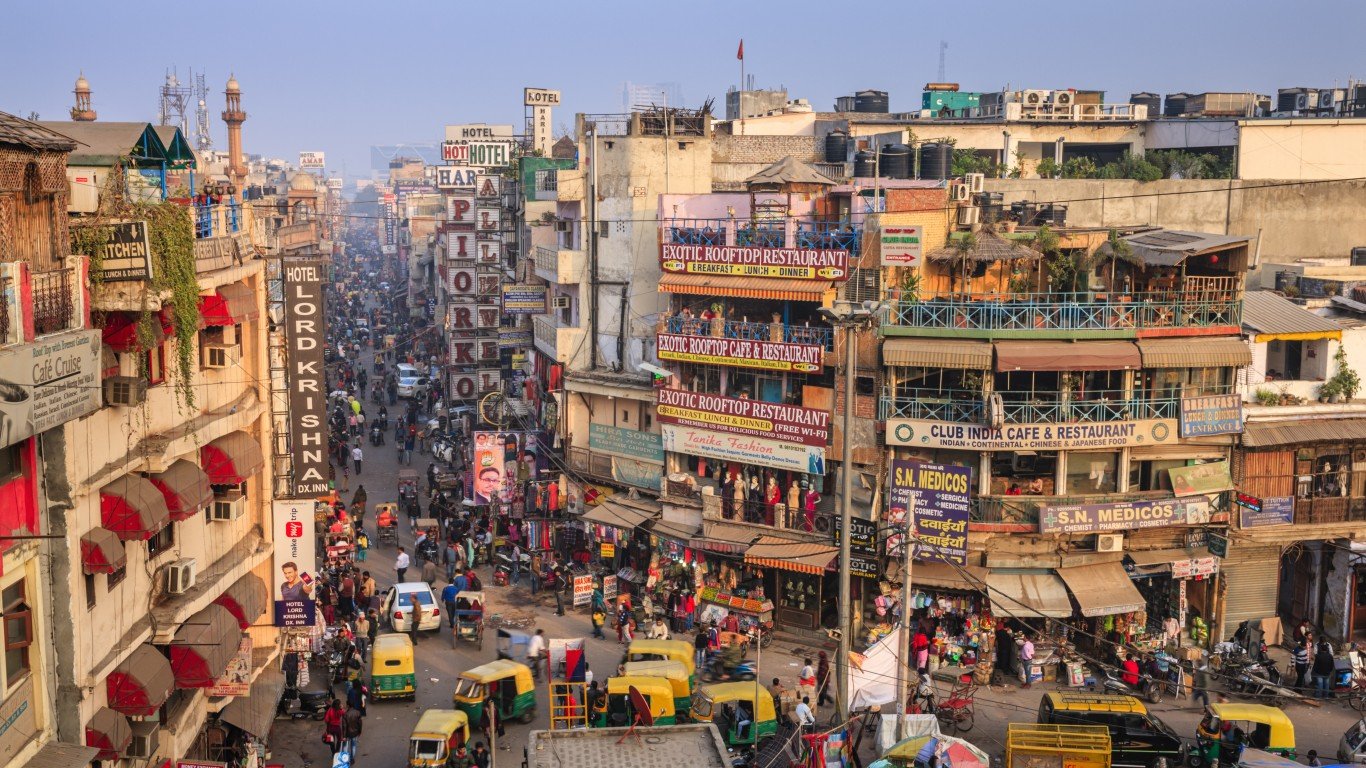
1. Delhi, India
> Est. population, 2050: 49.6 million, 54% growth from 2022
> Ecological threat level: 4 – High
> Air quality: 3 – Unhealthy
> Expected climate changes: Hotter
> Global peace index (1-5, most to least): 2.78 – Very Low Peace
> Estimated GDP in 2020: $229 billion
Delhi’s high incidence of cardiovascular damage among its population can be attributed to the toxic haze that covers the National Capital Territory that includes India’s capital of New Delhi. The levels of fine particulate matter emitted largely from vehicles, burning of wood and rubbish, diesel generators, and construction activity, far exceeds World Health Organization limits.
Several interrelated factors explain Delhi’s poor air quality, including pollutants from human activity (such as burning wood), construction, poor public transport system, and unfavorable geographic location and regional meteorology, which results in low humidity and episodic dust events from the surrounding environment.
Water pollution, potable water availability, and quality of waste disposals are other ecological threats in one the world’s largest and one of its fastest-growing cities.





